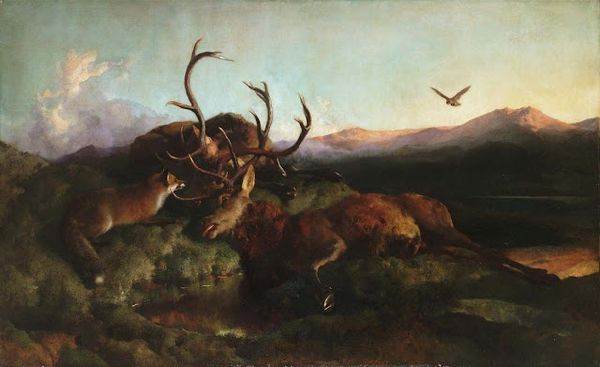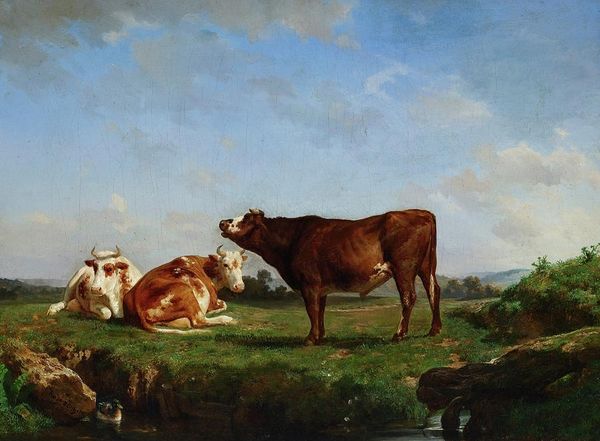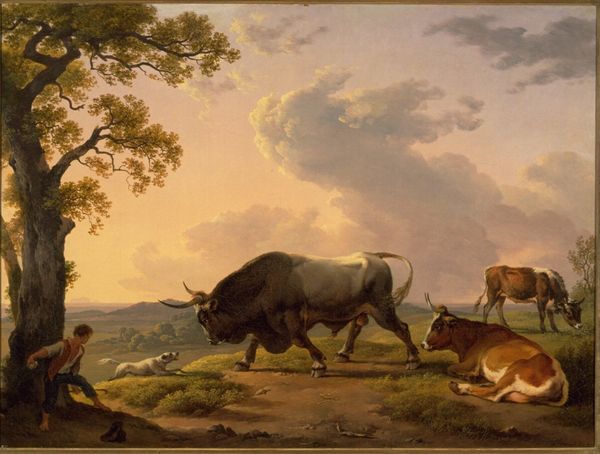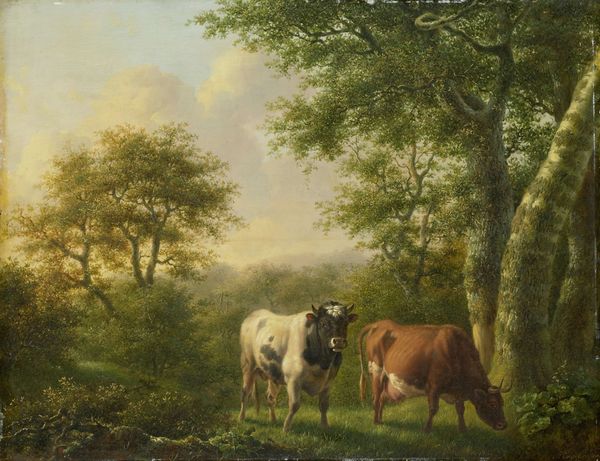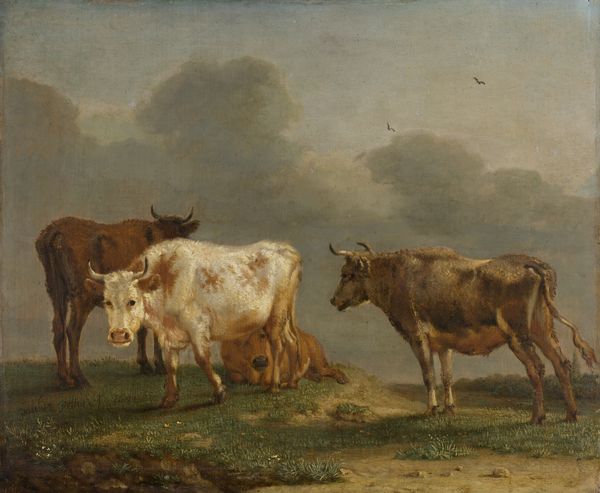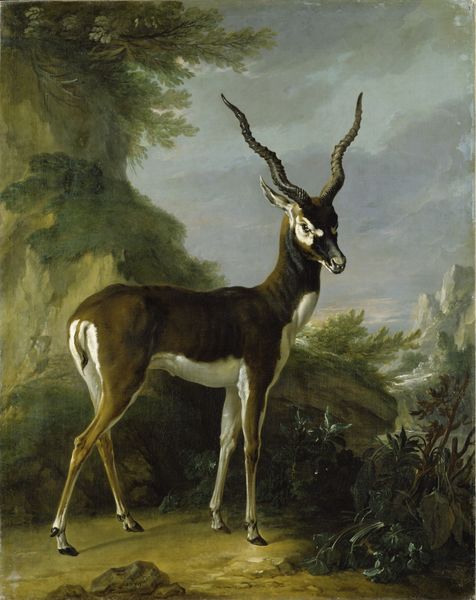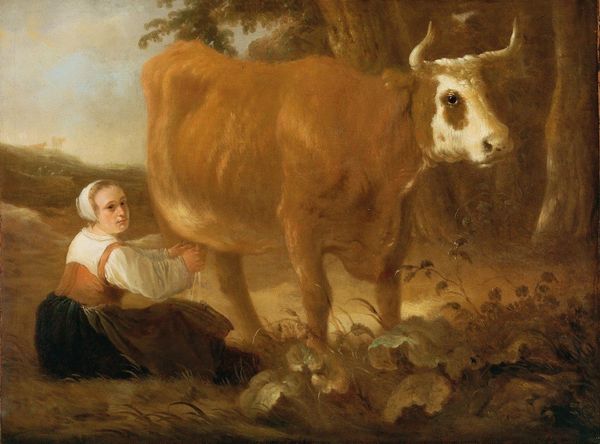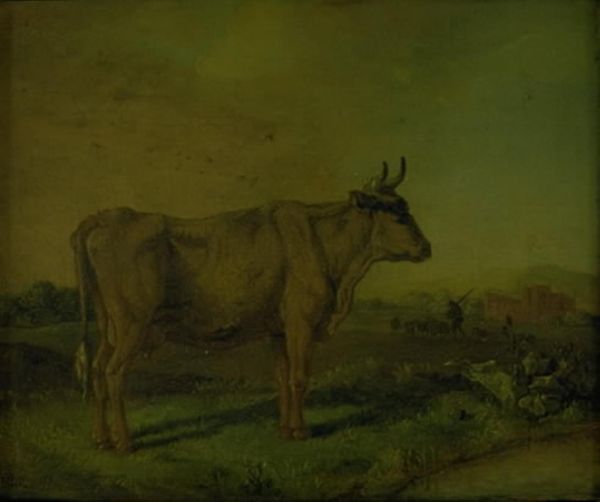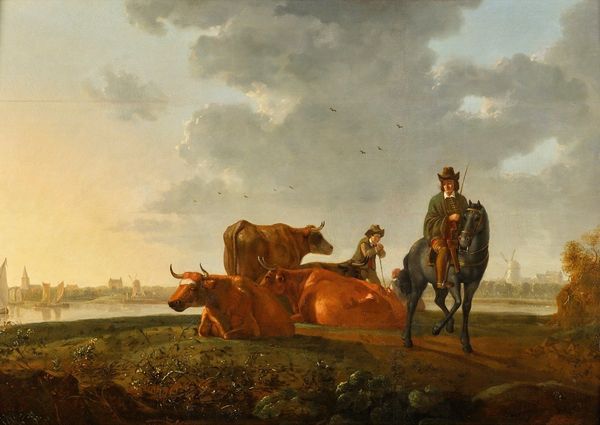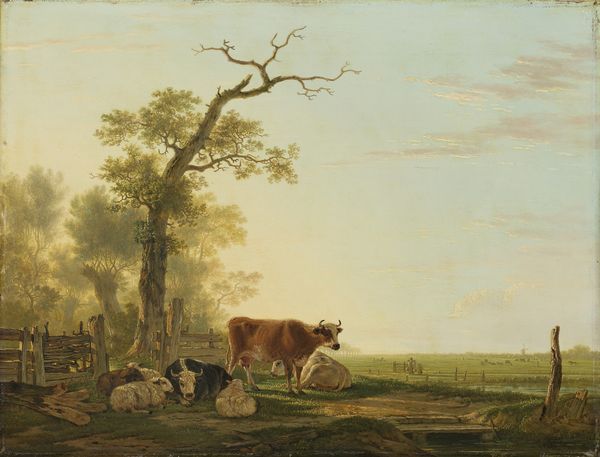
Copyright: Public Domain: Artvee
George Stubbs' painting 'Hound Coursing a Stag' presents a dramatic intersection of form and tension. The scene's dynamism is constructed through opposing diagonals: the stag's powerful antlers reach upwards and leftwards, countered by the hound's lean body stretching to the right. The contrast between the dark, earthy tones of the stag and the bright white and brown of the hound is not just aesthetic but symbolic, encapsulating the life and death struggle. Stubbs masterfully uses the texture of the paint to differentiate the smooth coat of the hound from the rougher hide of the stag. The stag’s fur is thick, a marker of its natural, animalistic state while the hound's short sleek coat shows that it has been bred for a distinct purpose. The composition, though seemingly naturalistic, is highly constructed, reflecting the philosophical concerns of the period. The painting invites us to consider the relationship between nature and culture, freedom and control, in a world increasingly shaped by human intervention.
Comments
No comments
Be the first to comment and join the conversation on the ultimate creative platform.
